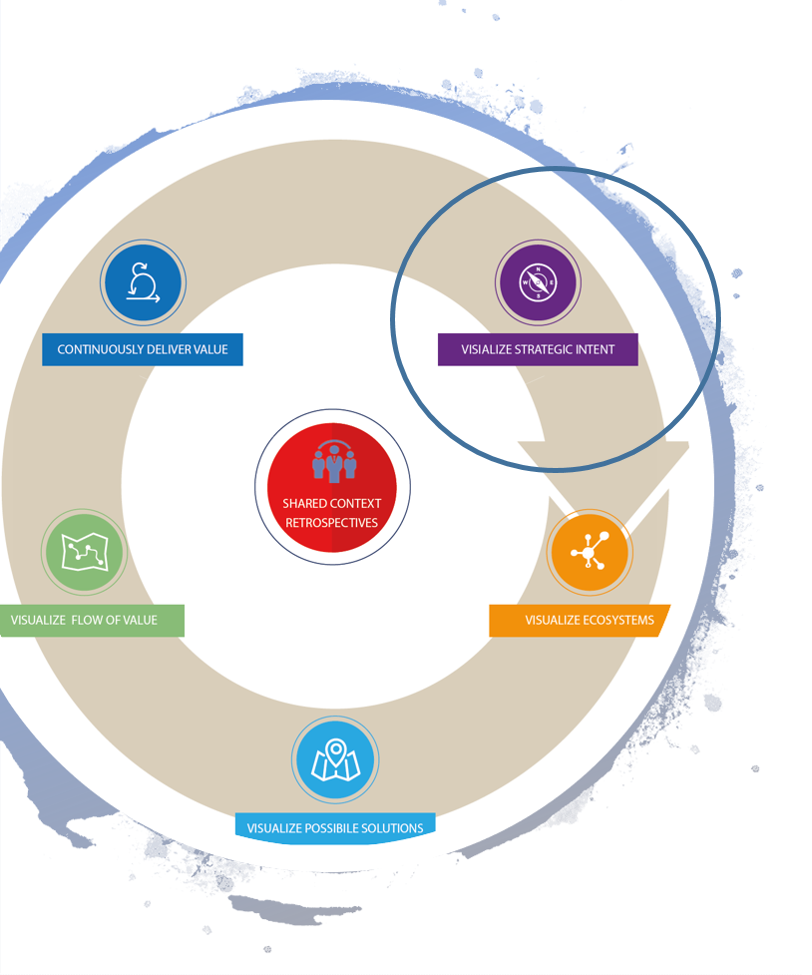
As the digital era becomes entrenched, while many companies are focused on mere survival, a few vanguard companies thrive. The vanguards are structured to efficiently handle change in all facets of their business simultaneously.
These companies can adapt because they have developed instruments and capabilities to sense changes in their environment along with the capacity to take organization-wide purpose-driven action that is continuously evaluated and adjusted. Further, vision, objectives, and strategy are all plyable and iterative and can be quickly communicated through all layers of their organization, as well as externally through their ecosystems. Everyone in the boat understands their role, how they contribute and can make on-route course corrections.
Clarity of Intent starts with Shared Context
Gaining clarity of intent starts with creating the environment for collaboration and co-creation. We have found the most engaging way to do this is to apply Agile principles to how we create vision, objectives and strategy. We also find that adopting an iterative release cycle toward new and updated business capabilities creates the opportunity to re-visit the strategic organizational and ecosystem contexts via frequent organization-wide retrospectives. Although the business capability release cadence is subject to change based on insights gained during execution, we recommend it be done in a 90-day cadence tied to fiscal quarters.
Strategy articulates how we get to the next evaluation point at the end of the next cadence. Co-creating strategic intent with critical players in your organization as well as those within your ecosystem help define an intended vision, identify the problems you believe you need to solve or the opportunities you think you will be able to exploit based on the current context. You also need to define measurable and prioritized objectives to guide solving the identified problems and exploiting the available opportunities. This enables the creation of the organizational backlog of value to be delivered within the first 90-day cadence period.
Focusing on strategic intent is also how to create shared context, first within your organization, with your clients/customers, as well as with your ecosystem partners. Shared context, premised on the clarity of strategic intent, is also the first step in understanding how each of us perceives value. As Simon Sinek says, “value is perception”. As individuals, we need to see the value to us before we can believe in the intent. When we can see ourselves in the strategic intent through the value we perceive, the shared context enables us to achieve our goals and objectives collectively.
Open and transparent face-to-face conversation within and across organizational boundaries is necessary to define and continually validate intent and any desired course of action to achieve it. This capability or lack thereof, is having ever more significant impacts on both organizational success and demise. Therefore, a strategy must encompass a clear understanding of the ecosystem and an ongoing ability to react to the changes it imposes on the organization.

